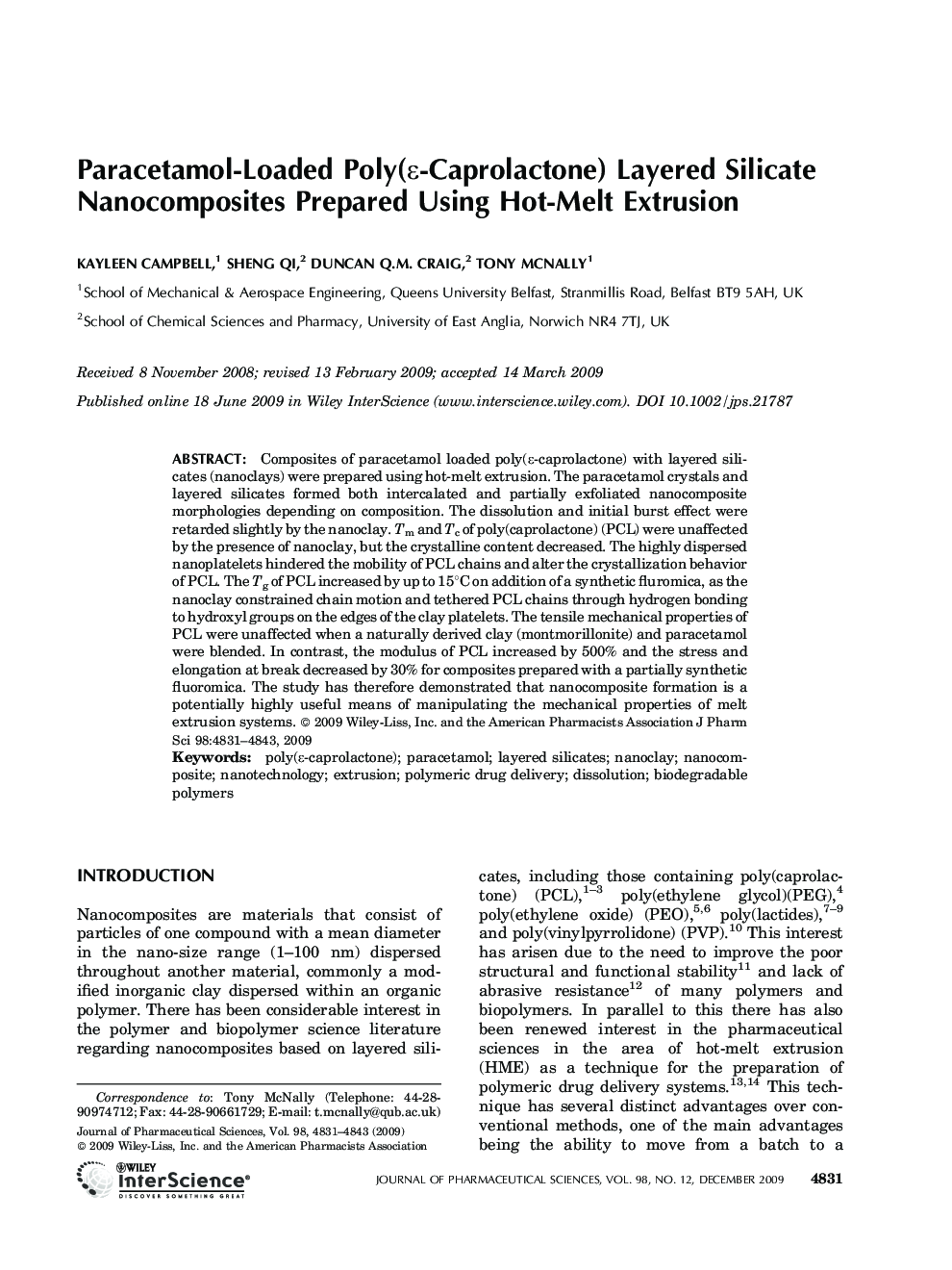| Article ID | Journal | Published Year | Pages | File Type |
|---|---|---|---|---|
| 2486590 | Journal of Pharmaceutical Sciences | 2009 | 13 Pages |
Abstract
Composites of paracetamol loaded poly(ε-caprolactone) with layered silicates (nanoclays) were prepared using hot-melt extrusion. The paracetamol crystals and layered silicates formed both intercalated and partially exfoliated nanocomposite morphologies depending on composition. The dissolution and initial burst effect were retarded slightly by the nanoclay. Tm and Tc of poly(caprolactone) (PCL) were unaffected by the presence of nanoclay, but the crystalline content decreased. The highly dispersed nanoplatelets hindered the mobility of PCL chains and alter the crystallization behavior of PCL. The Tg of PCL increased by up to 15°C on addition of a synthetic fluromica, as the nanoclay constrained chain motion and tethered PCL chains through hydrogen bonding to hydroxyl groups on the edges of the clay platelets. The tensile mechanical properties of PCL were unaffected when a naturally derived clay (montmorillonite) and paracetamol were blended. In contrast, the modulus of PCL increased by 500% and the stress and elongation at break decreased by 30% for composites prepared with a partially synthetic fluoromica. The study has therefore demonstrated that nanocomposite formation is a potentially highly useful means of manipulating the mechanical properties of melt extrusion systems. © 2009 Wiley-Liss, Inc. and the American Pharmacists Association J Pharm Sci 98:4831-4843, 2009
Keywords
Related Topics
Health Sciences
Pharmacology, Toxicology and Pharmaceutical Science
Drug Discovery
Authors
Kayleen Campbell, Sheng Qi, Duncan Q.M. Craig, Tony McNally,
